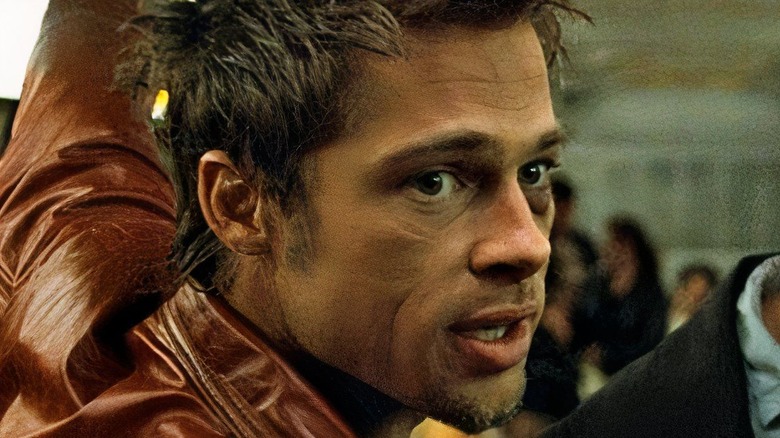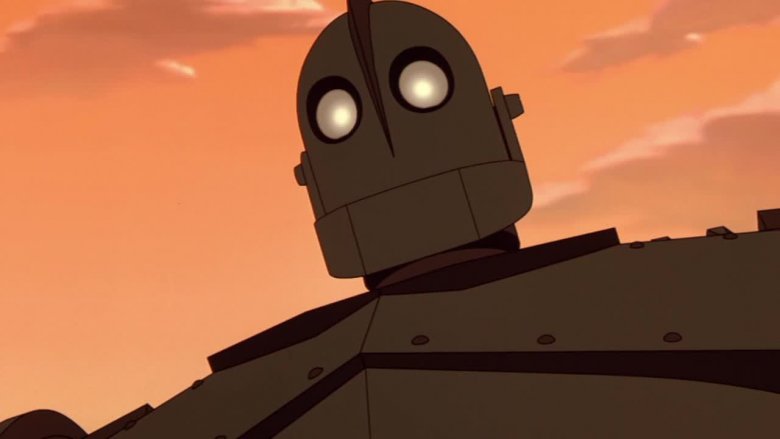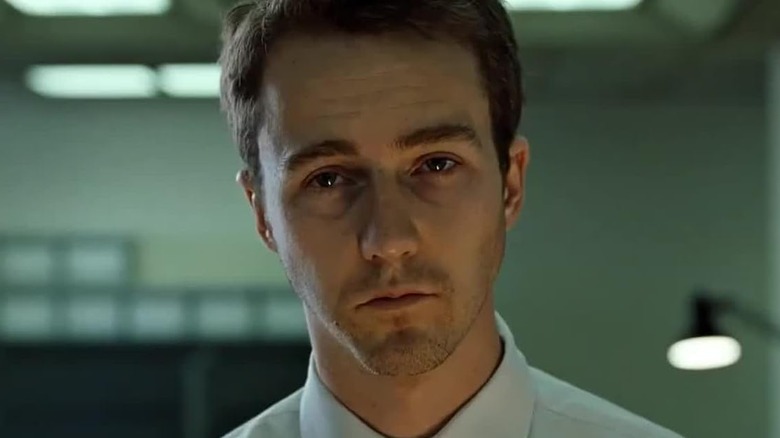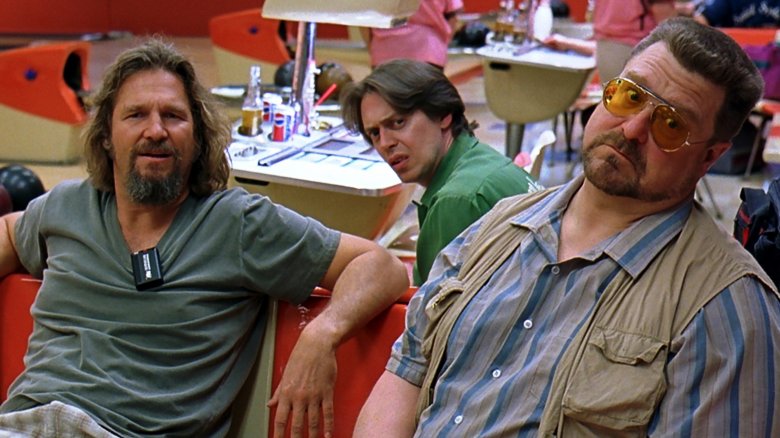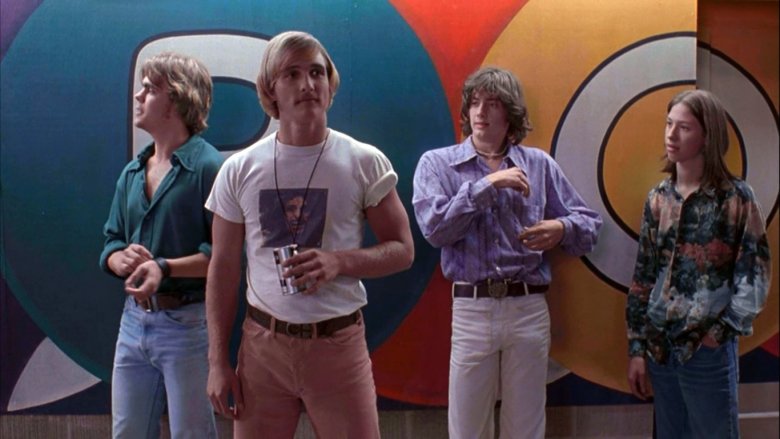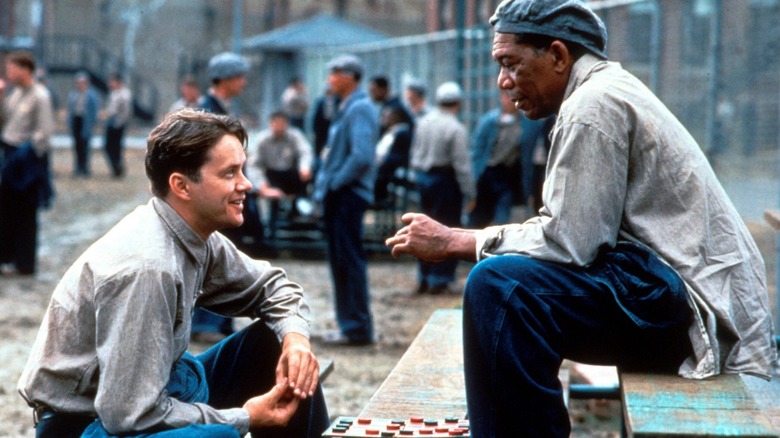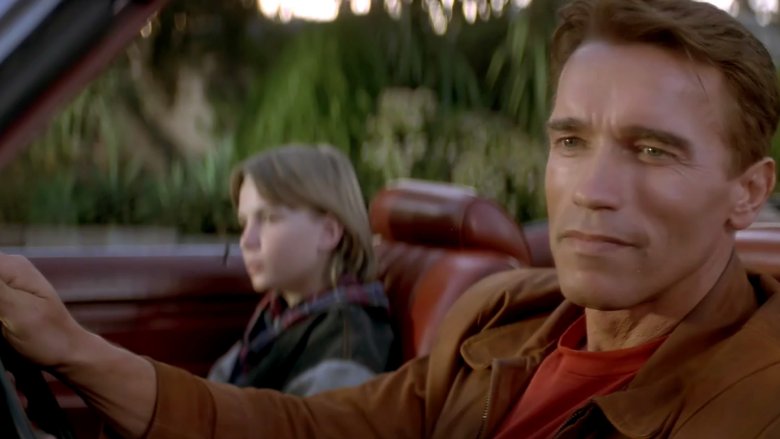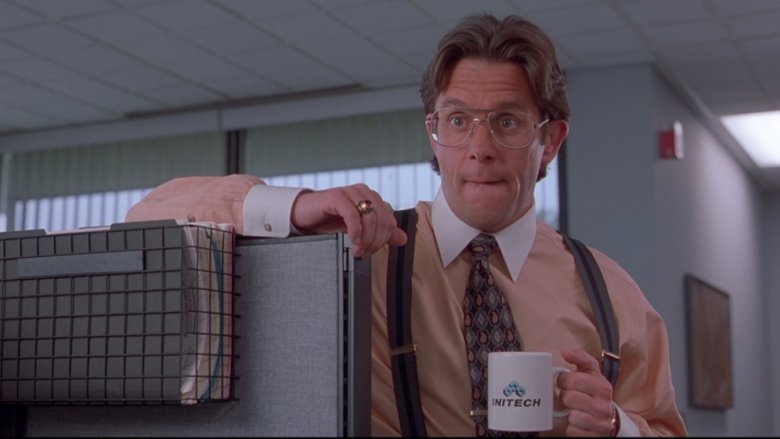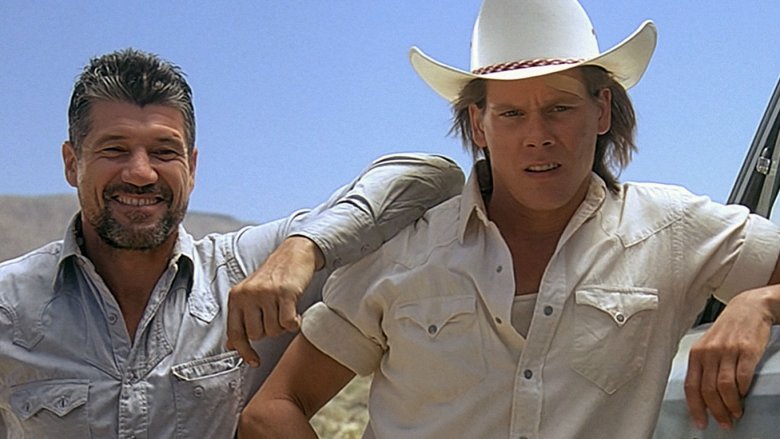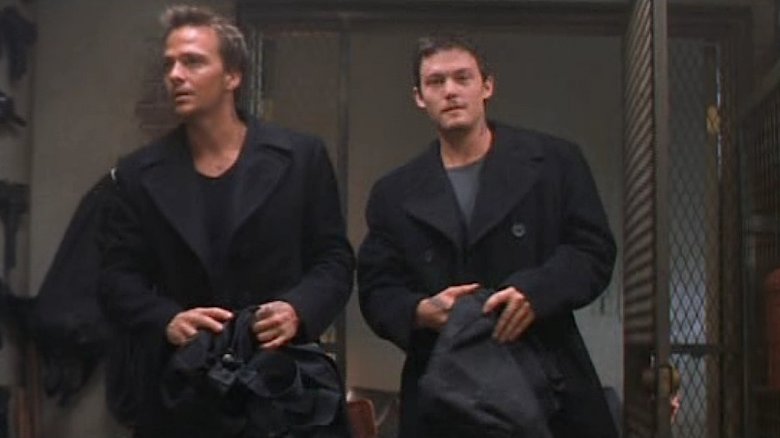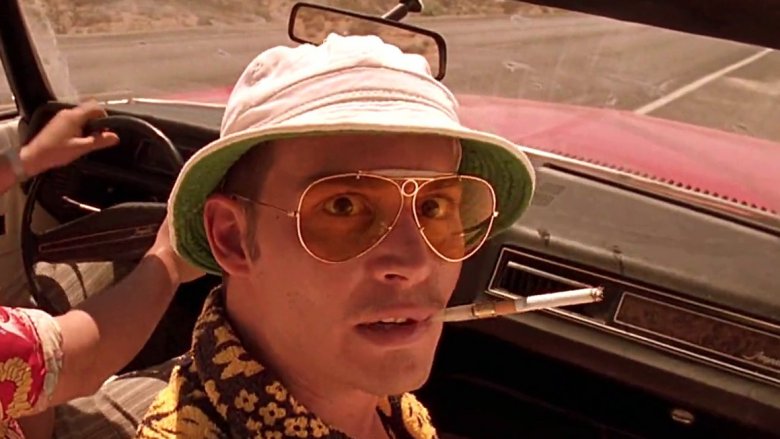Beloved '90s Movies You Won't Believe Bombed At The Box Office
It's hard to predict what films will endure in popular culture. Something like the Orson Welles starrer The Third Man is remembered decades and decades later as a fundamentally worthwhile piece of art. Yet, there are hundreds of movies lost to time. It's easy to assume that popular and successful works will endure, but that's not always the case. Sometimes the most culturally relevant movies don't quite click with their audience for years, only becoming successes long after the fact. Here are some of our favorite '90s movies that were originally box office bombs when they were released.
The Iron Giant (1999)
Brad Bird has given the world some wonderful animated gifts. Without him, there would be no The Incredibles, no Ratatouille, and no Do The Bartman (yes, really). Still, arguably his best movie wasn't a CGI Pixar film or a strangely catchy music video, it was the touching tale of a metal man with a (figurative) heart of gold, The Iron Giant. The movie was a critical smash, winning numerous awards and demonstrating a voice acting range that Vin Diesel struggles to live up to today. Shockingly, even with the critical acclaim and award nominations, the movie massively underperformed at the box office, earning less than half of its budget back in theaters. In retrospect, this seems insane.
Around the time of its release, animated films had started looking more like the CGI Toy Story than the classic hand-drawn style of The Iron Giant, but this film's smooth design, engaging script, and likable cast should have propelled it to a box office smash. Experts tend to blame the marketing campaign by Warner Bros. (or more accurately, the lack of marketing) for making the movie a hidden gem rather than the box office hit many fans today would have expected. Regardless, the film has lived on as a classic, with an ending that can't help but make anyone tear up.
Fight Club (1999)
Busted lips, dirty faces, and Brad Pitt shirtless and bloody are just some of the most memorable and striking images in David Fincher's anti-commercialist thriller Fight Club. The adaptation of Chuck Palahniuk's most famous novel, the movie is a violent romp through a world of toxic masculinity, anchored by incredible performances by Brad Pitt, Edward Norton, and Helena Bonham Carter. Even today, you can't talk about any set of rules without some wise guy jumping in with "first rule of Fight Club is that you don't talk about Fight Club."
The movie is an unassailable part of our popular culture at this point, but it didn't quite catch on with nineties audiences. It took a small, dedicated cult fanbase to keep the movie in constant conversation until the cultural zeitgeist placed it decidedly in the classics category. It certainly doesn't hurt that the film's prinicpal actors are three genuine movie stars. It even features Jared Leto in an early role. Predominantly though, it's the dense writing, striking cinematography, and anti-capitalist themes that all keep the movie as fresh today as when it was first released. Still, that hasn't kept anyone from reevaluating the virtues, or lack thereof, of the questionable video game adaptation.
The Big Lebowski (1998)
There are very few movies from the nineties as eminently quotable as The Big Lebowski, a Coen brothers film that's simultaneously a loving sendup of classic L.A. noir films and a stoner comedy about a guy just trying to get his rug back ("It really tied the room together"). Like all Coen brothers movies, there's a crowd-pleasing main story (in this case, a stoner who bumbles into a conspiracy) with much more sinister, dense undertones and themes (all the male characters are forced to grapple with masculinity and what being a man means in the nineties to various ends).
The film's an unforgettable trip, but the weird dialogue and Chandler-esque mystery didn't quite work for audiences or critics. The film received mixed reviews at the time and severely underperformed at the box office. It was only with time that viewers came to appreciate the easy charisma of Jeff Bridges (who has arguably been playing some form of The Dude for the last couple decades), the manic energy of John Goodman, and the Andy Warhol-esque weirdness of Julianne Moore. Plus, more than anything else, the film is just funny. It's almost impossible to watch it without recognizing the touchstones of popular culture that've been built out of nearly every line of the movie.
Dazed and Confused (1993)
Dazed and Confused is the movie Matthew McConaughey will never be able to escape. To be fair, it's also the movie that gave him his start, so he can't complain too much. Whether you think the movie's "alright, alright, alright" or just alright, there's no denying that Richard Linklater's coming-of-age period piece was a generation-defining comedy. Unlike the John Hughes movies of yester-decades that cranked the drama up, Dazed and Confused was about as slowed down, lo-fi, and grungy as a movie named after a Led Zeppelin song could get.
Dazed and Confused is a hallowed Linklater movie, even among a career of beloved hits from Before Sunrise to Boyhood. The breezy, natural dialogue helps, and a cast of soon-to-be-famous stars like McConaughey, Ben Affleck, and Milla Jovovich certainly didn't hurt, but the true joy of the movie is just completely nailing the feeling of being a teenager—that aimless mix of boredom and anxiety that pervades a teen's life.
The Shawshank Redemption (1994)
1994 was an insanely stacked year for beloved movie releases. Quentin Tarantino's non-linear crime comedy Pulp Fiction hit theaters, Tom Hanks wandered through the decades as the slow-yet-insightful Forrest Gump, and a little known prison drama starring Morgan Freeman and Tim Robbins was released. We're referring, of course, to The Shawshank Redemption, and while it might be hard to believe now, audiences weren't exactly flocking to see it. Part of the problem is that the movie's got a difficult name to remember, especially if you (like most people at the time) weren't familiar with the Stephen King short story on which it was based. Even Freeman started calling it "The Shimshunk Reduction" because so many fans misquoted the original title.
While it wasn't exceptionally popular, the positive reviews and seven Academy Award nominations intrigued enough people that it became the most rented movie on VHS upon release. That, plus the constant marathons by TV channel TNT, meant that that the film had become a beloved standby, and "get busy living or get busy dying" became an aphorism almost everyone knows.
Last Action Hero (1993)
Arnold Schwarzenegger has been through a whole gamut of incredible action films, but what's often missed in his roles as giant killing-machine beefcakes is that he has a surprisingly wry comedic sensibility. That ability for comedy has never been put to better use than Last Action Hero, a film that's both a metatextual parody of classic action movies and a genuinely thrilling, funny movie in its own right. It should've been an easy slam dunk with audiences, with the director of Die Hard, John McTiernan, and the writer of Lethal Weapon, Shane Black, at the helm. Schwarzenegger himself was box office magic, with Predator (his previous film with McTiernan) and Commando setting the template for the Schwarzenegger blockbuster.
Unfortunately, the film left audiences flat and bombed at the box office. Sources pointed toward behind-the-scenes drama between the copious rewrites, but maybe audiences weren't quite ready for a film that so deftly took apart action movie tropes. These days, however, it's considered one of Schwarzenegger's best, even if only for the incredible trailer for a Schwarzenegger-starring Hamlet movie that appears in the film.
Office Space (1999)
Office jobs can be soul-crushing, and no movie better exemplifies that than Mike Judge's Office Space. All the unending monotony, the passive-aggressive superiors, and the complete lack of importance of whatever your job is supposed to be, there was a lot to mine comedically. The film follows an office drone whose slow, boiling rage at the management eventually leads to a variety of problems both at work and in his personal life.
While the film may owe a bit to its spiritual comic strip cousin Dilbert, Mike Judge's acerbic wit and relatable characters pushed the film into cult classic status over the years—hard to do when its initial release was seen by so few people, the movie barely covered its own budget. Office Space became the lodestone for the cathartic release of office worker frustration. Ironically, though, the famous red stapler in the film (a symbol of the put-upon anonymous office cog) was eventually produced en masse by Swingline, becoming yet another mass-produced piece of workplace memorabilia with no unique attributes.
Tremors (1990)
Everyone in Hollywood is six degrees from Kevin Bacon, but the best Kevin Bacon movie by any degree is Tremors. Tremors is basically like if Alien had occurred in the desert with worms and all the gun culture, small-town paranoia, and general desert weirdoes you would expect. But all of that aside, the film hides one of the most genuinely perfect scripts in nineties genre movie history. The slow build of the worm monster's reveal and the best creature design since Predator all serve to make Tremors an earth-shattering treat.
As you might have guessed by now, due to its inclusion on this list, the movie managed to just barely cover its budget, and for years audiences were only vaguely familiar with the "graboids." Still, cult classics are often made from less. The film was able to secure a direct-to-video sequel and, eventually, a Blu-Ray re-release, all of which helped cement Tremors' status as the best worm-based horror-comedy set in the desert (a small list, to be fair). Today, the original is considered the classic it was always meant to be, while the concept itself has become a genuine franchise with numerous sequels and even a television series spinoff.
The Boondock Saints (1999)
Quentin Tarantino set a new standard in crime-drama with Reservoir Dogs in 1992. No one took that standard to heart quite as well as Troy Duffy. Duffy scripted and directed the stylized and violent The Boondock Saints, which follows two brothers who decide to start killing criminals in the Boston area. Starring a baby-faced Norman Reedus (of The Walking Dead fame) and Willem DaFoe at his most energetic, the movie's a ridiculous, un-ironic celebration of cool guys, cooler guns, and even cooler attitudes toward killing. Love it or hate it, it's unforgettable once you see it.
Unfortunately, quite a lot of audiences didn't get a chance to see it; Boondock Saints received poor critical reviews on top of a famously troubled production process that didn't exactly lend itself to institutional support from studio Miramax. Still, the bad boys of Boston found a home in viewer's homes when the film made over $50 million in DVD sales. Today, the film's take-no-prisoners attitude has endeared itself to lead to at least one sequel.
Fear and Loathing in Las Vegas (1998)
Terry Gilliam is known for unforgettable movies, from the techno-futuristic Brazil to the last movie to star Heath Ledger, The Imaginarium of Doctor Parnassus. What he's less known for is box office success, which hasn't stopped his films from becoming cult classics (Time Bandits ranks among his best, easily), like Fear and Loathing in Las Vegas. While it might seem hard to believe now, Fear and Loathing in Las Vegas (an adaptation of Hunter S. Thompson's famously un-filmable book about doing drugs in the desert) was a box office bomb, barely able to scrape up two-thirds of its low production budget of $18 million.
While Thompson's drug-addled gonzo writing style certainly made an impression on generations of readers, Gilliam's adaptation lends the film a much needed visual aesthetic that's as influenced as much by indigenous Southwestern American art as it is by surrealist artists from the 1930s. Fear and Loathing in Las Vegas found a sizable audience on home video, especially once the Criterion collection edition was released, but its influence can be felt everywhere. There are very few narratives that can visualize a drug trip without borrowing imagery from this film in some way, even in the most unlikely of places.
